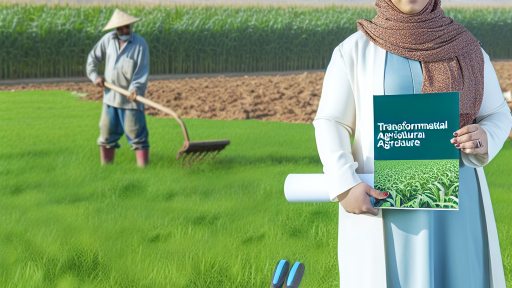Understanding the Regulatory Framework for Pesticides
Overview of Pesticide Regulations
Pesticide regulations govern the use of chemical substances.
These regulations ensure public safety and environmental protection.
Countries implement specific frameworks to manage pesticide approval.
In the United States, the Environmental Protection Agency oversees these processes.
Agencies evaluate the efficacy and safety of pesticide products.
Key Regulatory Bodies
Multiple organizations play critical roles in pesticide regulation.
At the federal level, the Environmental Protection Agency is the primary authority.
The USDA also contributes by evaluating agricultural uses of pesticides.
State agencies enforce local laws and regulations related to pesticide use.
Each state may have its own registration and compliance processes.
Pesticide Registration Process
The registration process is essential for ensuring pesticide safety.
Manufacturers must submit detailed studies on their products.
These studies include data on toxicity, environmental impact, and effectiveness.
The registration process can take several months or years.
Once approved, the product receives a registration number for use.
Transform Your Agribusiness
Unlock your farm's potential with expert advice tailored to your needs. Get actionable steps that drive real results.
Get StartedCompliance Requirements
Compliance with pesticide regulations is mandatory for all users.
Users must follow label instructions carefully to avoid violations.
It is crucial to maintain proper records of pesticide applications.
Regular training on regulations helps users stay informed.
Inspections from regulatory agencies can occur to ensure compliance.
Importance of Pesticide Compliance
Compliance is vital for protecting public health and the environment.
Non-compliance can lead to severe penalties and product recalls.
Furthermore, it enhances consumer trust in agricultural products.
Ultimately, adhering to regulations contributes to sustainable farming practices.
Identifying the Different Types of Pesticides and Their Uses
Chemical Pesticides
Chemical pesticides are synthetic substances used to control pests.
They include herbicides, insecticides, and fungicides.
Herbicides target unwanted plants, cutting down competition for crops.
Insecticides manage insect populations that threaten food production.
Fungicides are vital in preventing fungal diseases in plants.
Biological Pesticides
Biological pesticides use natural organisms to combat pests.
These include bacteria, fungi, and even beneficial insects.
For example, Bacillus thuringiensis is a bacteria effective against caterpillars.
Using biological pesticides minimizes harm to the environment.
Organophosphates
Organophosphates are a group of chemical pesticides.
They work by disrupting the nervous systems of pests.
These pesticides can pose health risks to humans and animals.
Therefore, proper handling and application is crucial.
Systemic Pesticides
Systemic pesticides are absorbed by plants and protect from within.
They help control insects and diseases without direct application.
Showcase Your Farming Business
Publish your professional farming services profile on our blog for a one-time fee of $200 and reach a dedicated audience of farmers and agribusiness owners.
Publish Your ProfileThis method can effectively reduce pesticide run-off into the environment.
Natural Pesticides
Natural pesticides come from plant or mineral sources.
Examples include neem oil and diatomaceous earth.
These products are generally less toxic to non-target organisms.
They are increasingly popular among organic farmers.
Usage and Application
Understanding the correct application methods is essential.
Follow label instructions to ensure efficacy and safety.
Timing applications can enhance pest control efforts.
Consider environmental factors such as weather and pest life cycles.
Conducting a Comprehensive Risk Assessment for Pesticide Applications
Understanding the Importance of Risk Assessment
A risk assessment identifies potential hazards in pesticide applications.
This process helps to minimize environmental and health impacts.
Furthermore, it ensures compliance with regulatory requirements.
Gathering Relevant Information
Start by collecting data on the specific pesticides intended for use.
Research their active ingredients and potential side effects.
Additionally, consider their application methods and target areas.
This information builds a foundation for an effective risk assessment.
Identifying Hazardous Scenarios
Next, identify scenarios where potential exposure may occur.
Consider situations such as drift, runoff, and spillage events.
Evaluate the proximity of sensitive ecosystems and human populations.
By assessing these scenarios, you can prioritize risks appropriately.
Evaluating Exposure Risks
Assess the likelihood of exposure based on identified scenarios.
Use models or past data to estimate potential exposure levels.
Consider both acute and chronic exposure risks to human health.
This evaluation provides crucial information for informed decision-making.
Analyzing Potential Impacts
Next, analyze the potential impacts of both human health and the environment.
Assess the toxicity of the pesticides involved in the application.
Additionally, evaluate the potential harm to non-target species.
This analysis assists in weighing the benefits against the risks.
Determining Risk Management Strategies
Develop strategies to mitigate identified risks effectively.
Consider alternatives to hazardous pesticides where possible.
Furthermore, implement safety measures during application processes.
Educating staff about best practices also enhances safety.
Documentation and Reporting
Keep detailed records of the risk assessment process.
Include findings, strategies, and recommendations in the documentation.
This transparency supports compliance and accountability.
Reviewing and Updating Risk Assessments
Regularly review and update the risk assessment as needed.
Stay informed about new research and regulations affecting pesticide use.
Consider changes in applications that may alter risk profiles.
By maintaining current assessments, you enhance safety and compliance.
Learn More: Strategies For Reducing Chemical Dependency In Agriculture
Showcase Your Farming Business
Publish your professional farming services profile on our blog for a one-time fee of $200 and reach a dedicated audience of farmers and agribusiness owners.
Publish Your ProfileDeveloping a Pesticide Management Plan Aligned with Compliance Standards
Understanding Compliance Standards
Compliance standards dictate how pesticides should be managed and applied.
Familiarize yourself with both local and federal regulations.
Connect with local agricultural offices for specific guidance.
Establish the importance of adhering to these regulations for public safety.
Recognize that non-compliance can lead to severe penalties.
Assessing Current Practices
Begin with a thorough evaluation of your current pesticide practices.
Identify any gaps that may exist in your existing protocols.
Document usage patterns and frequency of pesticide applications.
This assessment will provide a benchmark for improvements.
Creating the Management Plan
Draft a detailed pesticide management plan based on your assessment.
Include specific guidelines for safe pesticide handling, storage, and application.
Incorporate training programs for staff involved in pesticide management.
Use visual aids and practical demonstrations for effective training.
Monitoring and Record Keeping
Implement a robust monitoring system for pesticide usage.
Keep accurate records of all pesticide applications.
Regularly review these records to identify trends and adjust practices.
Document incidents and responses to any pesticide-related issues.
Seeking Continuous Improvement
Evaluate the effectiveness of your management plan regularly.
Solicit feedback from staff to enhance procedures.
Stay informed about new developments and technologies in pesticide management.
Adjust your practices based on updated compliance guidelines and feedback.
Engaging with Stakeholders
Maintain open lines of communication with all stakeholders.
Share your pesticide management practices with community members.
Participate in community meetings to address concerns related to pesticide use.
Build partnerships with environmental organizations to promote safe practices.
Uncover the Details: Best Practices for Meeting Animal Welfare Standards on Farms
Implementing Proper Storage and Handling Procedures for Pesticides
Understanding Pesticide Storage Requirements
Proper storage of pesticides is crucial for safety and compliance.
Store pesticides in a cool, dry place away from direct sunlight.
Ensure the storage area is well-ventilated at all times.
Use lockable cabinets or storage rooms to prevent unauthorized access.
Clearly label all storage areas and containers for easy identification.
Establishing Safe Handling Procedures
Follow strict protocols when handling pesticides.
Always wear appropriate personal protective equipment (PPE) during use.
Utilize gloves, goggles, and masks to minimize exposure risks.
Read and understand the pesticide label before application.
Prepare only the amount of pesticide needed to avoid excess waste.
Implementing Emergency Procedures
Develop emergency response plans for pesticide spills or accidents.
Ensure that all employees are trained on these procedures.
Keep an accessible first aid kit in close proximity to storage areas.
Have spill kits on hand and know how to use them effectively.
Showcase Your Farming Business
Publish your professional farming services profile on our blog for a one-time fee of $200 and reach a dedicated audience of farmers and agribusiness owners.
Publish Your ProfileConducting Regular Training and Evaluations
Schedule regular training sessions for all employees handling pesticides.
Evaluate understanding by conducting assessments after training.
Provide updates on any changes in regulations or procedures.
Encourage a culture of safety and awareness within your organization.
Maintaining Accurate Records
Keep detailed records of all pesticide purchases and usage.
Document all training sessions and employee participation.
Maintain records of any incidents or accidents related to pesticide use.
Regular audits help ensure compliance and identify areas for improvement.
Discover More: Farm-To-Table Legislation and Its Impact on Farm Revenue Streams
Training Employees on Safe and Effective Pesticide Use
Importance of Training
Training employees is crucial for pesticide compliance.
It ensures that all staff members understand safety protocols.
Additionally, proper training reduces the risk of accidents.
Consequently, compliance improves the overall work environment.
Identifying Training Needs
Assess the skills and knowledge of employees regularly.
Identify gaps in their understanding of pesticide use.
Utilize surveys and feedback to gather necessary data.
Moreover, consider the specific needs of each role.
Developing Training Programs
Create comprehensive training programs tailored to needs.
Include both theoretical and practical components.
Make use of engaging materials such as videos and manuals.
Furthermore, consider offering hands-on training sessions.
Conducting Training Sessions
Schedule training sessions at convenient times for staff.
Encourage participation and interaction during these sessions.
Utilize experienced trainers to facilitate learning.
Also, provide real-world examples to reinforce key concepts.
Evaluating Training Effectiveness
Evaluate training effectiveness through assessments and quizzes.
Gather feedback from participants at the end of each session.
Incorporate suggestions to improve future training programs.
This ongoing evaluation fosters a culture of continuous learning.
Continual Education and Refreshers
Offer refresher courses periodically to reinforce knowledge.
Stay updated on the latest regulations and best practices.
Encourage employees to attend workshops and seminars.
Finally, create a culture where learning and safety are prioritized.
See Related Content: How Agricultural Policies Address Climate Challenges

Maintaining Accurate Records of Pesticide Use and Inventory
Importance of Accurate Record Keeping
Accurate record-keeping is essential in pesticide compliance.
It ensures you meet legal and regulatory standards.
Additionally, it helps monitor pesticide effectiveness over time.
Moreover, it fosters accountability in pesticide usage.
Components of Proper Record Keeping
Start by documenting the type of pesticide used.
Include the quantity applied during each treatment.
Showcase Your Farming Business
Publish your professional farming services profile on our blog for a one-time fee of $200 and reach a dedicated audience of farmers and agribusiness owners.
Publish Your ProfileFurthermore, record the application dates and locations.
It is important to note the target pest and crop type.
Additionally, document the applicator’s name and certification.
Creating an Efficient Inventory System
An organized inventory system enhances efficiency.
Establish a method for tracking pesticide stock levels.
Use software tools or paper logs for ease of management.
Regularly update your inventory to prevent shortages.
Moreover, ensure proper storage conditions for each pesticide.
Training and Compliance
Train employees on record-keeping procedures.
Emphasize the importance of accurate data entry.
Additionally, provide resources on compliance requirements.
Conduct periodic audits to ensure adherence to practices.
Following these steps builds a culture of compliance.
Utilizing Technology for Record Keeping
Leverage technology to streamline record-keeping processes.
Digital tools can simplify data entry and storage.
Moreover, they facilitate easy access to records when needed.
Consider applications specifically designed for pesticide management.
These tools help maintain adherence to regulatory standards.
Staying Updated on Changes to Pesticide Regulations and Best Practices
Understanding Regulatory Updates
Regulatory bodies frequently update pesticide regulations.
Staying informed about these changes is essential for compliance.
Subscribe to newsletters from organizations like the Environmental Protection Agency.
Follow state agricultural departments for localized updates.
Utilizing Online Resources
The internet offers a wealth of information on pesticide compliance.
Visit official government websites for the latest legal requirements.
Engage in forums and online communities focused on agricultural practices.
Participating in Workshops and Training Sessions
Attend workshops hosted by agricultural extension services.
These events cover both regulations and best practices.
Networking with experts can offer practical insights.
Implementing Best Practices
Adopt an integrated pest management approach.
This method reduces reliance on chemical pesticides.
Utilize resources such as the National Pesticide Information Retrieval System.
Regularly review and update your pesticide usage plans.
Documenting Compliance Efforts
Keep detailed records of pesticide applications.
This documentation should include dates, amounts, and types of pesticides used.
Store records in a secure yet accessible location.
Regularly review documentation to ensure accuracy and completeness.
Consulting Professionals
Seek advice from agricultural consultants specializing in pesticides.
They can provide tailored recommendations for your specific situation.
Consider hiring a compliance officer for larger operations.
Engaging with Community Initiatives
Participate in local sustainable agriculture programs.
Showcase Your Farming Business
Publish your professional farming services profile on our blog for a one-time fee of $200 and reach a dedicated audience of farmers and agribusiness owners.
Publish Your ProfileThese initiatives often focus on safe pesticide use.
Community involvement can enhance your compliance efforts.
Conducting Regular Audits and Inspections to Ensure Compliance
The Importance of Regular Audits
Regular audits play a crucial role in maintaining compliance with pesticide regulations.
They help identify potential areas of non-compliance before issues arise.
Additionally, audits foster a culture of accountability within the organization.
Establishing a Routine Inspection Schedule
Creating a routine inspection schedule enhances compliance efforts.
Inspectors should focus on all areas where pesticides are stored and used.
Using a checklist can streamline the inspection process.
Moreover, documenting findings during inspections creates an accountability trail.
Training Staff for Effective Compliance
Training staff increases awareness of pesticide compliance requirements.
Employees should understand the importance of following safety protocols.
Regular refresher training sessions can keep compliance knowledge current.
Additionally, encouraging questions can clarify any uncertainties staff may have.
Utilizing Technology for Monitoring
Implementing technology can improve compliance monitoring significantly.
For instance, compliance management software helps track inspection results.
Furthermore, automation can reduce human error during data collection.
Using technology also simplifies the reporting process for audits.
Responding to Findings
A timely response to audit findings is essential for compliance.
Developing corrective action plans can address identified issues effectively.
Moreover, involving the entire team in the resolution process promotes buy-in.
Reviewing corrective actions in subsequent audits ensures continuous improvement.
Engaging Third-Party Experts
Sometimes, engaging third-party experts can enhance compliance efforts.
These professionals can provide an unbiased perspective on operations.
Additionally, they may offer insights based on their industry experience.
Third-party reviews can also strengthen the credibility of internal audits.
Additional Resources
Regulation of Biotech Plants | Home
Regulated Organism and Soil Permits | Animal and Plant Health …




